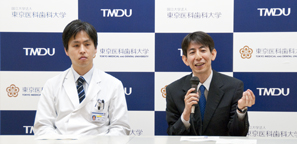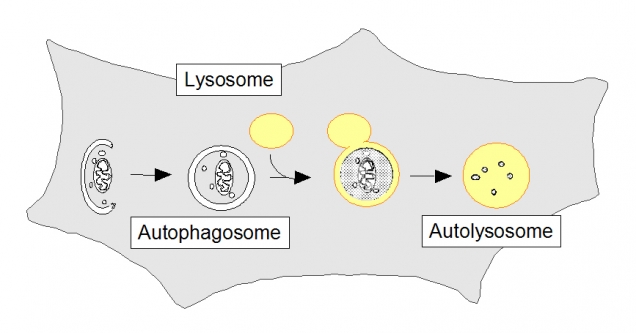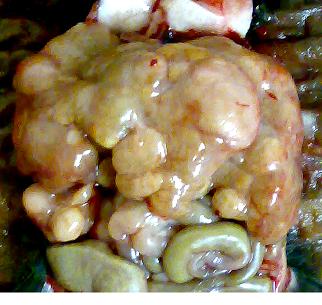“Autophagy prevents spontaneous tumor development in the liver”

Akito Takamura
(Assistant Professor,
Department of Medicine and Rheumatology)
Noboru Mizushima
(Professor, Department of Physiology and Cell Biology)
Graduate School of Medical and Dental Sciences
Background
Content of the research
Future potential

A portion of cytoplasm, including organelles, is enclosed by an isolation membrane to form an autophagosome. The outer membrane of the autophagosome subsequently fuses with the lysosome, and the internal material is degraded.

Liver tumors developed in the Atg5
mosaically-deleted mice (19 months).
Publication information
Akito Takamura, Masaaki Komatsu, Taichi Hara, Ayako Sakamoto, Chieko Kishi, Satoshi Waguri, Yoshinobu Eishi, Okio Hino, Keiji Tanaka, and Noboru Mizushima
Genes Dev. 2011;25 795-800
http://genesdev.cshlp.org/cgi/content/abstract/25/8/795?etoc
Contact
| Noboru Mizushima, M.D., Ph.D. Department of Physiology and Cell Biology, Graduate School of Medical and Dental Sciences, Tokyo Medical and Dental University Phone : +81-3-5803-5158 Fax : +81-3-5803-0118 E-mail : nmizu.phy2@tmd.ac.jp URL : http://www.tmd.ac.jp/med/phy2/index.html |

